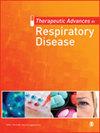Nebulization versus metered-dose inhaler and spacer in bronchodilator responsiveness testing: a retrospective study
IF 3.3
3区 医学
Q2 RESPIRATORY SYSTEM
引用次数: 0
Abstract
Background: The recommended delivery mode for bronchodilators in bronchodilator responsiveness (BDR) testing remains controversial. Objective: To compare the efficacy of salbutamol administration using a nebulizer versus a metered-dose inhaler (MDI) with spacer in BDR testing. Design: A retrospective study. Methods: This study examined the data of patients with chronic obstructive pulmonary disease who completed BDR testing between 1 December 2021 and 30 June 2022, at Xiangya Hospital, Central South University. After administering 400 μg of salbutamol through an MDI with spacer or 2.5 mg using a nebulizer, the changes in forced expiratory volume in one second (FEV1) and forced vital capacity (FVC) were analyzed in patients with moderate-to-very severe spirometric abnormalities [pre-bronchodilator FEV1 percentage predicted values (FEV1%pred) ⩽59%]. Significant responsiveness was assessed as >12% and >200 mL improvement in FEV1 and/or FVC or >10% increase in FEV1%pred or FVC percentage predicted values (FVC%pred) from pre- to post-bronchodilator administration. Results: Of the enrolled 894 patients, 83.2% were male (median age, 63 years). After propensity score matching, 240 pairs of patients were selected. The increment in FEV1 and increased FEV1 relative to the predicted value (ΔFEV1%pred) were significantly higher in patients <65 years and those with severe spirometric abnormalities in the nebulization group than patients in the MDI group (all p < 0.05). Compared with MDI with spacer, patients who used nebulization had a 30 mL greater increase in ΔFEV1 (95% CI: 0.01–0.05, p = 0.004) and a 1.09% greater increase in ΔFEV1%pred (95% CI: 0.303–1.896, p = 0.007) from baseline. According to the > 12% and >200 mL increase criterion, the significant BDR rate with nebulization was 1.67 times higher than that with an MDI with spacer (OR = 1.67, 95% CI: 1.13–2.47, p = 0.009). Conclusion: Salbutamol delivered using a nebulizer may be preferable to an MDI with spacer in certain circumstances. Nebulization has the potential to increase responsiveness to salbutamol in BDR testing.支气管扩张剂反应性测试中雾化与计量吸入器和喷雾器的对比:一项回顾性研究
背景:在支气管扩张剂反应性(BDR)测试中,支气管扩张剂的推荐给药方式仍然存在争议。目的:比较沙丁胺醇雾化给药与带间隔剂的计量吸入器(MDI)在BDR检测中的疗效。设计:回顾性研究。方法:本研究检查了2021年12月1日至2022年6月30日在中南大学湘雅医院完成BDR检测的慢性阻塞性肺疾病患者的数据。分析中度至极重度肺功能异常患者经间隔剂吸入沙丁胺醇400 μg或雾化吸入2.5 mg后的用力呼气量(FEV1)和用力肺活量(FVC)变化[支气管扩张剂前FEV1百分比预测值(FEV1%pred)≥59%]。显着反应性评估为FEV1和/或FVC改善>12%和> 200ml,或FEV1%pred或FVC百分比预测值(FVC%pred)从支气管扩张剂使用前到使用后增加>10%。结果:入组的894例患者中,83.2%为男性(中位年龄63岁)。经倾向评分匹配后,选取240对患者。FEV1的增量和FEV1的增加相对于预测值(ΔFEV1%pred)在12%和>200 mL的增加标准中均显著高于雾化治疗组,显著BDR率是有间隔的MDI组的1.67倍(OR = 1.67, 95% CI: 1.13 ~ 2.47, p = 0.009)。结论:在某些情况下,沙丁胺醇雾化器给药优于带间隔剂的MDI。在BDR试验中,雾化有可能增加对沙丁胺醇的反应性。
本文章由计算机程序翻译,如有差异,请以英文原文为准。
求助全文
约1分钟内获得全文
求助全文
来源期刊

Therapeutic Advances in Respiratory Disease
RESPIRATORY SYSTEM-
CiteScore
6.90
自引率
0.00%
发文量
57
审稿时长
15 weeks
期刊介绍:
Therapeutic Advances in Respiratory Disease delivers the highest quality peer-reviewed articles, reviews, and scholarly comment on pioneering efforts and innovative studies across all areas of respiratory disease.
 求助内容:
求助内容: 应助结果提醒方式:
应助结果提醒方式:


